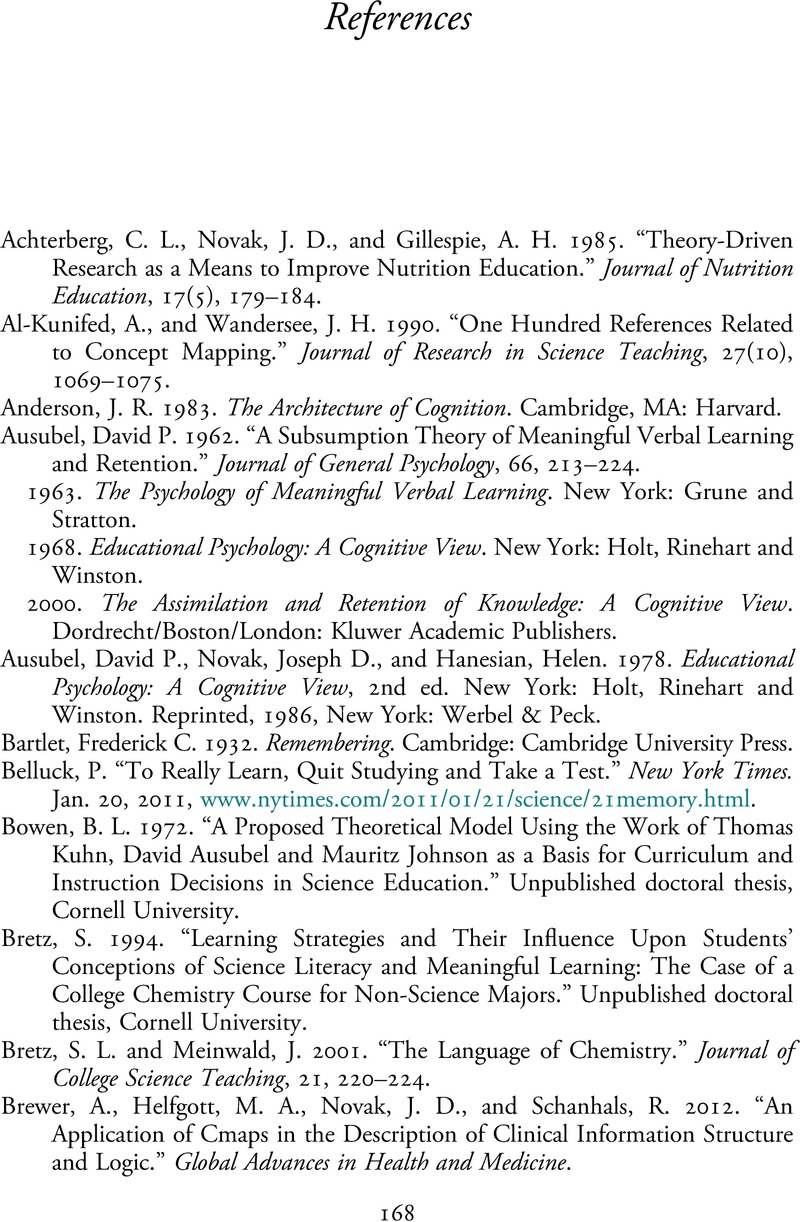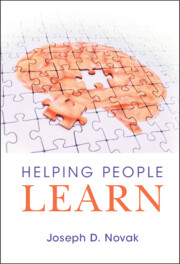Book contents
- Helping People Learn
- Helping People Learn
- Copyright page
- Contents
- Figures
- Preface
- Chapter 1 Developing the Foundations to Help People Learn
- Chapter 2 The Invention and Use of CmapTools Software in Schools, Corporations, and Other Organizations
- Chapter 3 Building a Theory of Education
- Chapter 4 The Design of Better Instructional Programs
- Chapter 5 A Look to the Future
- Book part
- References
- Index
- References
References
Published online by Cambridge University Press: 16 June 2022
- Helping People Learn
- Helping People Learn
- Copyright page
- Contents
- Figures
- Preface
- Chapter 1 Developing the Foundations to Help People Learn
- Chapter 2 The Invention and Use of CmapTools Software in Schools, Corporations, and Other Organizations
- Chapter 3 Building a Theory of Education
- Chapter 4 The Design of Better Instructional Programs
- Chapter 5 A Look to the Future
- Book part
- References
- Index
- References
Summary

- Type
- Chapter
- Information
- Helping People Learn , pp. 168 - 175Publisher: Cambridge University PressPrint publication year: 2022



